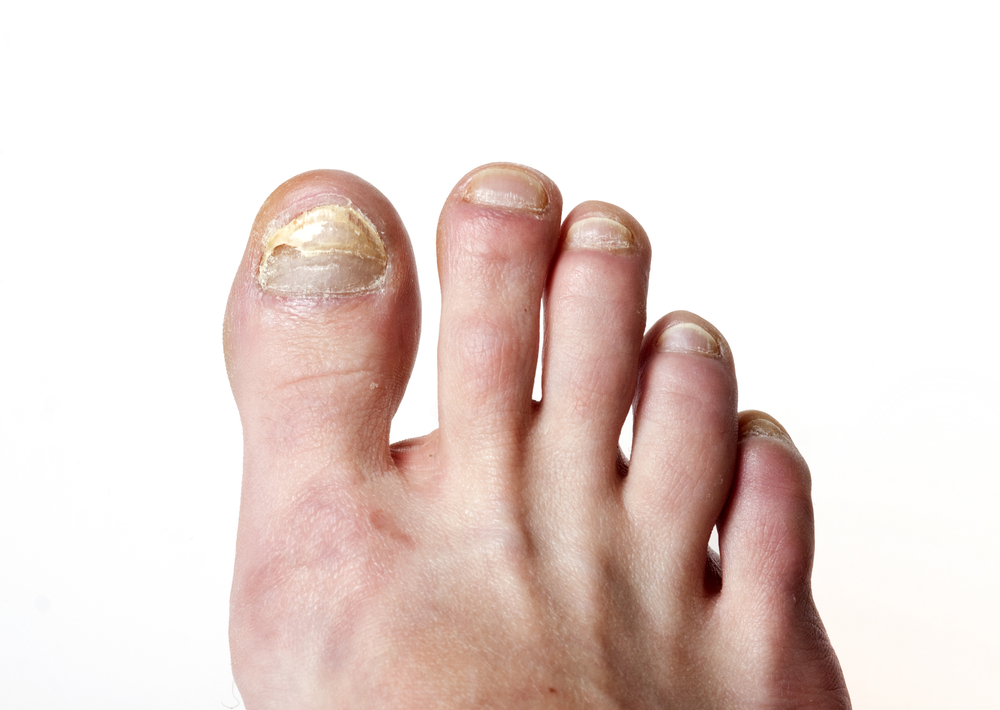While both conditions can make your nails thicken and change color, they have different causes and require different treatments. Keeping your nails trimmed, clean, and dry can help you avoid nail fungus or psoriasis.
Nail fungus usually affects the toenails, while nail psoriasis tends to show up on the fingernails. Learn how to tell the difference so you can get the right treatment.
Symptoms
Although they look similar and can occur at the same time, nail psoriasis and nail fungal infection have distinct causes, symptoms, and treatments. Knowing the difference can help you make an accurate diagnosis and get the correct treatment.
Nail fungus (also known as tinea unguium or onychomycosis) is an infection that affects the nails, including the nail plate and the nail bed. It can be spread through direct contact with someone who has a fungal nail infection or through the same types of moist environments that can cause psoriasis, such as shower shoes or walking barefoot in public areas. The infection can also be picked up from wearing shoes that don’t allow for proper air circulation, or from people who share personal items like nail clippers, socks, or shoes.
Fungus can cause the nails to change color and appear thicker than normal, or develop white streaks or spots called leukonychia. It can also lead to brittle, ragged, or cracked nails. Unlike psoriasis, fungal infections of the nails don’t usually create pitting or other surface changes in the skin around the nails.
It’s important to know that both nail psoriasis and fungus can affect the hands and feet, though they usually show up on the fingernails first and are more common in the toenails. It’s also important to understand that psoriasis can damage the nails and make them more vulnerable to fungal nail infections, and some medications used to treat psoriasis can weaken the immune system, making it easier for germs to enter the body.
To prevent fungal nail infections, always dry your hands thoroughly after washing and removing them from moist environments. Avoid using public nail clippers, and wear shoes that allow for proper air flow and are made of breathable materials. If you have psoriasis, keep your nails and the skin surrounding them clean, and moisturize regularly. You can also add turmeric to your diet, which has anti-fungal properties, or take a prescription oral medication such as terbinafine (Lamisil), itraconazole (Sporanox), or fluconazole (Diflucan). Seeing a doctor for a nail fungus diagnosis and proper treatment can help prevent the infection from spreading or worsening.

Diagnosis
Nail psoriasis and nail fungus may look similar, but they have different causes and treatments. A doctor who specializes in the skin, hair and nails (a dermatologist) can diagnose these conditions by examining your nail beds and taking a sample of the nail to send to a lab for testing.
The test for nail fungus looks for certain organisms that cause fungal infections, called dermatophytes and yeasts. Depending on the type of organism your doctor tests for, an antifungal medicine can be prescribed to treat the infection. These medicines are either creams you put on your nails or pills you take by mouth.
For nail psoriasis, doctors usually recommend treatment options that focus on managing symptoms and reducing inflammation. They might prescribe topical treatments (creams you put on the affected area) and oral medications that help calm your immune system, such as retinoids, immunomodulators or corticosteroids.
People who have nail psoriasis are also more likely to get a fungal nail infection, called onychomycosis. This is because psoriasis can damage the nails, making it easier for fungi to enter and grow under the nails. Fungus also tends to grow more easily in warm, moist environments, like locker rooms and around pools, and in those with compromised immune systems, such as those who are HIV positive or have diabetes.
While it’s rare to have both conditions at the same time, if you do, it’s important to talk with your doctor to see what treatment is right for you. Certain psoriasis treatments, such as steroid creams, can make fungal nail infections worse. You can help prevent or reduce the risk of getting these nail infections by washing your hands regularly and not putting pressure on your nails or toenails. Using natural home remedies can also help relieve pain, such as adding turmeric to your food (it has antifungal properties) or applying garlic oil to the affected nails and surrounding skin twice daily. Your doctor might also advise you to change your footwear more often, especially when going from a dry environment to a humid one, or to wear sandals when you go swimming at the pool or gym.
Treatment
Some of the symptoms of nail psoriasis and nail fungus overlap, so it can be difficult to get an accurate diagnosis. Pitting on the nails is a characteristic of both conditions, as is white nail discoloration (called leukonychia). But the way these signs appear can help doctors make the distinction. Psoriasis typically shows up in the fingernails, while fungal infections are more common in the toenails.
Also, psoriasis can cause your nails to split and crack, but this is less common in fungal infections. In addition, psoriasis often appears with other skin changes on the scalp and elsewhere on the body, while fungal infections are usually confined to the nails. Finally, some psoriasis treatments can cause your nails to thin out, making them more prone to fungus.
A primary care doctor or dermatologist (a specialist in the treatment of the skin, hair, and nails) can diagnose fungus and psoriasis. They’ll examine your nails and ask about your symptoms. Then they may clip or scrape off a small piece of your nail and send it to a lab for analysis. This will tell them whether or not you have a fungal infection, and if so, what type of fungus it is.
Fungus thrives in warm, moist environments like public showers and locker rooms, and people with circulatory problems or diabetes are at greater risk. It’s also possible to contract a fungal infection by acquiring it from someone else, or through physical contact with an object or surface that contains fungus.
Some treatments for psoriasis, such as topical steroids, can make fungal infections worse. So be sure to tell your doctor about any medications or supplements you’re taking, especially ones that can weaken your immune system. They may recommend antifungal treatments, which include topical creams and oral medications. Fungus can take months to go away, but if you treat it early and follow your doctor’s instructions, you can keep it from getting worse. You can also prevent fungus by keeping your hands and feet clean, drying them thoroughly, and wearing shoes that fit properly.
Prevention
If you have nail pitting, thickening, or changes in color and texture, make an appointment with your healthcare provider to get a diagnosis. They’ll be able to tell you what the problem is, and prescribe ointments or medication — or both. Both conditions are treatable, and treatment may take a few months to a year.
Nail fungus (technically called onychomycosis) is an infection that affects the nails. It often starts in the toenails but can also affect the fingernails. It causes the nails to become discolored, thickened, and crumbly. It can also cause the nails to separate from the skin. It can be painful and can cause other health problems, such as a yeast infection in the skin or a circulatory disorder. Nail fungus is more common in people over 60 and those with diabetes, but it can affect anyone.
There aren’t any cures for nail psoriasis, but medications can help control the condition. Your doctor may recommend ointments or oral medications to reduce inflammation and itchiness, such as methotrexate (Methotrexate) or cyclosporine (Cytoxantrone). Some doctors also suggest antifungal creams or sprays that you rub onto your nails.
You can prevent fungal infections by not going barefoot in public areas, especially showers at the gym or pool. Always wear shoes that fit well and allow your feet to breathe, and wash your hands frequently, especially after being in a public area. Be sure to dry your feet completely, and don’t share footwear or nail clippers with others. You can also get a manicure or pedicure at a reputable shop that uses clean tools and sterilizes its equipment.
Both nail psoriasis and nail fungus are treatable, but you may need to try different treatments to find what works best for you. To see whether you have nail fungus, your doctor may do a fungus test on a small scraping of the affected nail or nail bed. They may also ask you about your health history and symptoms, and perform a physical exam. They might also order a potassium hydroxide preparation or a fungal culture to see what’s causing your nail problem.
